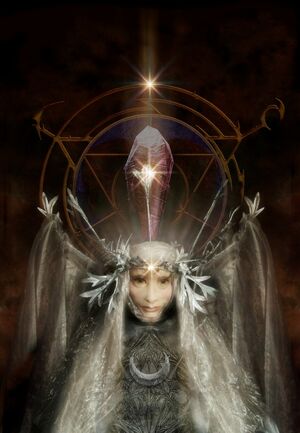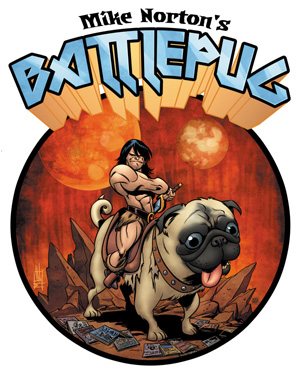The Bible is filled with terror: demons, ghosts, floods wiping out mankind and the rising of the dead. “Good horror examines the struggle between good and evil,” he says. “The Bible is the history of that struggle. “The Bible is in many ways the ultimate horror novel.”
This evokes the common rite of passage that fiction readers experience:
- Young adults read an introductory horror-fantasy novel from a famous author (J.R.R.Tolkien, C.S.Lewis, Stephen King, Anne Rice,…)
- They enjoy the first novel, so they consume more from the same author.
- They discover that their favorite books are religious allegories (eh gods!)
- They cope with being disillusioned/betrayed.
 | Niel Gaimen summarized this phenomenon well with his twelve year old boy character, Richard Grey, in his short story One Life Furnished with Early Moorcock within the anthology Michael Moorcock's Elric: Tales of the White Wolf: |
Richard had, however, finally given up (with, it must be admitted, a little regret) his belief in Narnia. From the age of six -- for half his life-- he had believed devoutly in all things Narnian; until last year, rereading The Voyage of The Dawn Treader for perhaps the hundredth time, it had occurred to him that the transformation of the unpleasant Eustace Scrub into a dragon, and his subsequent conversion to belief in Aslan the lion, was terribly similar to the conversion of St. Paul on the road to Damascus; if his blindness were a dragon...
This having occurred to him, Richard found correspondences everywhere, too many to be simple coincidence.
Richard put away the Narnia nooks, convinced, sadly, that they were allegory; that an author (whom he trusted) had been attempting to slip something past him. He had had the same disgust with the Professor Challenger stories when the bull-necked old professor became a convert to Spiritualism; it was not that Richard had any problems believing in ghosts -- Richard beleved, with no problems or contradictions, in everything -- but Conan Doyle was preaching, and it showed through the words. Richard was young, and innocent in his fashion, and believed that authors should be trusted, that there should be nothing hidden beneath the surface of a story.
Like it or not, speculative fiction is influenced by religion
One the one hand, all fantasy plots have been explored ad nauseum (read Fraser’s The Golden Bough). After all, a great deal of literature has accumulated since man began recording stories (history). Every combination of soap opera between man, beast, self, god, etc. has been covered, so much so, that any myth/story can be considered derivative of a prior (i.e. replaced) myth or religious allegory. Myths even maintain a consistent story structure across beliefs, time, geographies (Campbell’s Monomyth). In fact, most religions have cannibalized each other's stories (yes, most of the stories in the Bible are derived from pre-existing myths…oh the terror!). | The Golden Bough: A Study in Magic and Religion (Sir James George Frazer,1854–1941) |
 | The Hero with a Thousand Faces ( by mono-myth espouser Joseph Campbell ) |
So whether writers/readers/religious-folk want to acknowledge it or not, fantasy, myths, and religious tales are derivative.
The funny mystery is why that revelation should horrify readers and religious folk alike. If you enjoyed fiction derived from stories that humanity continues to enjoy retelling, who cares to whom credit is assigned for its creation? Will the act of reading religious-based fiction automatically indoctrinate atheists into some institution they have an aversion to? If you enjoy the Bible, does the fact that many of the stories in the Old and New Testaments evolved from "myths" bother you? This philosophical mess is what drives readers away from trying to figure "it" all out. Can we not enjoy stories, escape from assigning credit or truth to any of it? Going back to Niel Gaimen's thoughts expressed through his character Richard Grey, we are reminded why many of us desire innocent escapism:At least the Elric stories were honest. There was nothing going on beneath the surface there: Elric was the etiolated prince of a dead race, burning with self-pity, clutching Stormbringer, his dark-bladed broadsword – a blade which sang for lives, which ate human souls and which gave their strength to the doomed and weakened albino.











































 The
epic tale of blood and drool begins here! Keeping the tradition of its
creator-owned mentality, Dark Horse Comics is pleased to announce its
newest venture with Mike Norton—Battlepug!
The
epic tale of blood and drool begins here! Keeping the tradition of its
creator-owned mentality, Dark Horse Comics is pleased to announce its
newest venture with Mike Norton—Battlepug!

